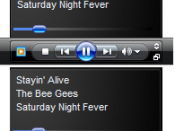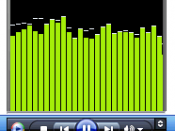Streaming Media is defined as listening or viewing media in real time as it comes across the World Wide Web. Streaming technology allows a user to receive live or pre-recorded audio and video. A user can jump to any location in the video or audio presentation. Streaming media generally keeps pace with the connection speed to reduce interruptions and stalling. Streaming media requires a media player to display the presentation. This paper will describe and compare Windows Media, Real Media QuickTime, software used with streaming media technology.
A media player is designed to play back different forms of multimedia file format, including DVD, CDDA, MPEG video, DivX, and MP3. Generally, the more desirable media players are configured to play multiple formats. Most media players have the capability to look up titles, names files from an online database such as CDDB or FreeDB. In addition, playback both files stored on a hard disk as well as Internet streaming media.
Thus a media player is often considered a web browser companion (Wikipedia). Media files are commonly embedded in a Web page. A typical web server holds HTML and graphic files, which are generally small. The typical video server is configured with very large storage capacities, as audio and video files may be huge. File size management is critical, since any server has a finite storage capacity.
Windows Media Player competes with Real Newtworks, Real One player and Apples' QuickTime. Windows Media Player is given away by Microsoft for free. Some view this practice is an echo of Microsoft's success in driving out Netscape Communications from its dominant position in the web browser market. Only this time, they contend, Microsoft attempts to drive its competitors in the streaming media market out of business (Wikipedia).
In business applications, Windows Media enhances communications and training...


